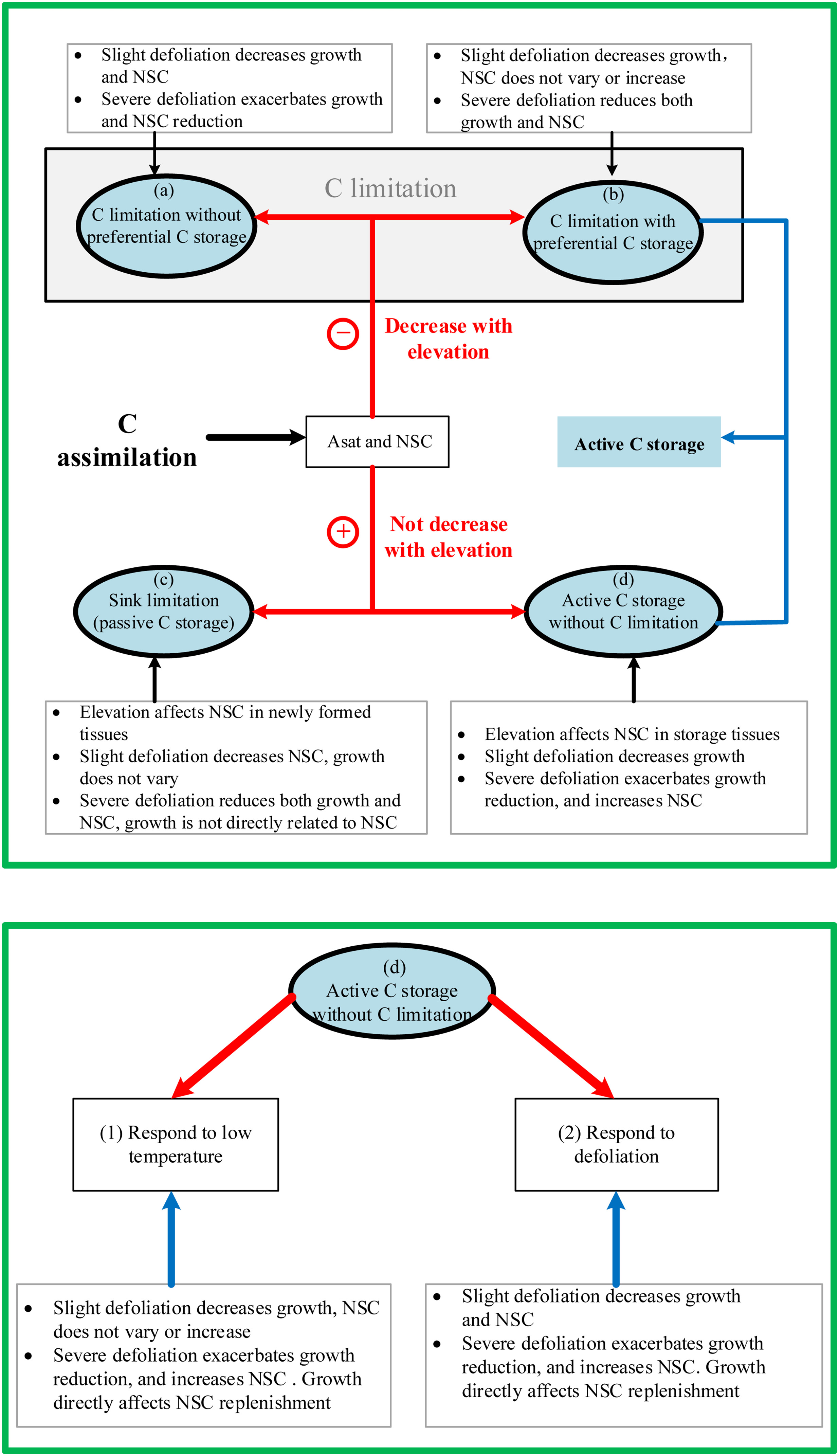
The upper elevational range limit of alpine plants is a species-specific low-temperature boundary. Its formation is attributed to the ecophysiological adaptability of tree species to low temperature stress. Up to now, the biological functional mechanism for the formation of the upper elevational tree-limit has not yet been explicitly elucidated based on the balance of carbon (C) source-sink.
Supervised by Prof. DANG Haishan from the Wuhan Botanical Garden, ZHOU Quan carried out a four consecutive years in situ defoliation experiment in three different functional types of tree species at their upper elevational range limit to examine the priority C allocation to storage at the expense of growth.
Declining temperature with elevation did not reduce the Asat in leaf-level in all three species. Elevation had a significant positive effect on non-structural carbohydrate (NSC) in the major storage tissues (e.g. root and twig), but had no effect on NSC in developing tissues (e.g. new leaf).
Severe defoliation produced significant reduction of growth. In addition, defoliation induced higher C storages across the four consecutive years of defoliation in deciduous species, while NSC generally reduced after mild defoliation and then had completely recovered to control levels with increasing severity of defoliation in evergreen species.
The study reveals that, irrespective of species functional type, C storage takes priority over growth, rather than C limitation or growth limitation. However, the preference of C storage is species-specific, that is, deciduous tree species have a preference for C allocation to storage in response to low temperature stress, while the prioritized C allocation to storage in evergreen tree species is only a transient physiological response to the disturbance of defoliation.
This research has been published in Science of the Total Environment entitled "Prioritized carbon allocation to storage of different functional types of species at the upper range limits is driven by different environmental drivers".
This study was supported by grants from the National Natural Science Foundation of China and the Biodiversity Survey and Assessment Project of the Ministry of Ecology and Environment of China.

Conceptual alternative mechanisms driving tree growth reductions at the upper elevational range limit (Image by ZHOU Quan)

86-10-68597521 (day)
86-10-68597289 (night)

52 Sanlihe Rd., Xicheng District,
Beijing, China (100864)

